Are you curious about the Labsky mixed dog breed and all the interesting pictures, characteristics, and facts that come with it? Well, you're in for a treat!
This unique and captivating breed brings together the best of both worlds, blending the lovable traits of the Labrador Retriever and the striking features of the Siberian Husky.
From their physical appearance to their temperament and health considerations, Labskies have so much to offer.
So, get ready to discover the fascinating world of Labskies and all that makes them truly special.
Key Takeaways
- Labskies are a mixed breed dog that is a cross between a Labrador Retriever and a Siberian Husky.
- They have a medium to large size and a strong, muscular build.
- Labskies have a friendly and intelligent expression with almond-shaped eyes.
- Labskies can adapt well to apartment living if they have lower activity levels.
Labsky Mixed Breed Overview
If you're looking for a mixed breed dog that combines the best qualities of a Labrador Retriever and a Siberian Husky, then the Labsky might be the perfect companion for you.
Labskies have a medium to large size and a strong, muscular build. They've a thick double coat that can come in a variety of colors, including black, brown, gray, and white.
Labskies have a friendly and intelligent expression with almond-shaped eyes. They often inherit the floppy ears of the Labrador Retriever and the curled tail of the Siberian Husky.
Labskies are known for being friendly and intelligent dogs who love human contact. With their mix of Labrador Retriever and Siberian Husky traits, they make great companions for active individuals or families.
Labsky Physical Characteristics
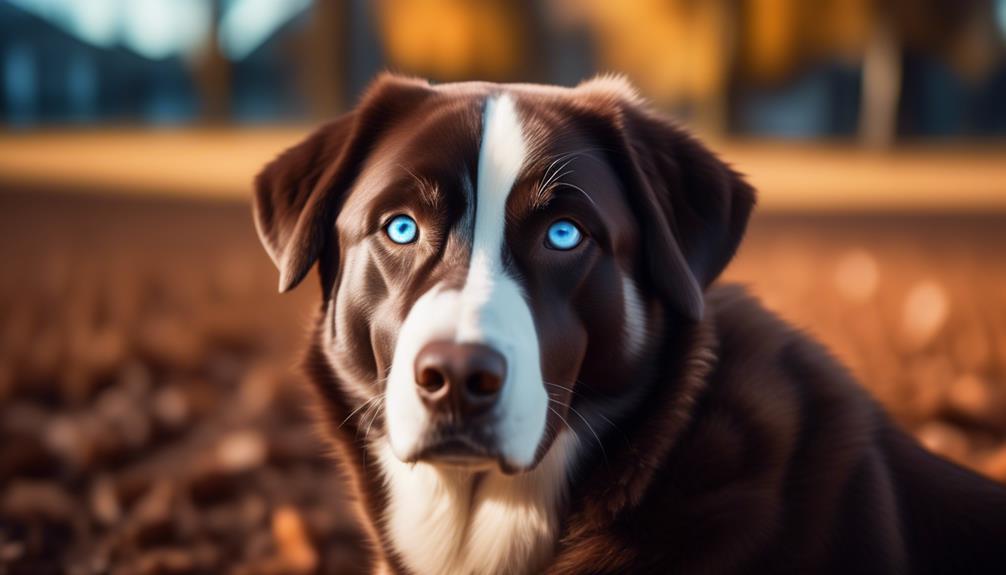
Labsky dogs have distinct physical characteristics that set them apart from other breeds. Here are three key features that make them unique:
- Medium to Large Size: Labskies have a sizeable build, typically weighing between 40 to 60 pounds. They stand at a height ranging from 20 to 28 inches, making them a substantial presence.
- Thick Double Coat: Labskies sport a dense double coat that offers protection in different climates. Their fur comes in various colors, including black, brown, gray, and white. This luxurious coat requires regular brushing to keep it in top condition.
- Friendly Expression and Almond-Shaped Eyes: Labskies have an intelligent and amicable expression that reflects their friendly nature. Their almond-shaped eyes give them a distinctive look, adding to their charm.
These physical characteristics contribute to the Labsky's appeal and make them easily recognizable among other dog breeds.
Labsky Coat Colors and Patterns

When it comes to Labskies, their coat colors and patterns can vary greatly. Labskies can have a wide range of coat colors, including black, brown, gray, and white. These colors can appear in solid coats or in combination with each other. In addition to the different colors, Labskies can also have various coat patterns. Some Labskies may have solid-colored coats, while others may have patterns such as brindle or merle. The coat of a Labsky can be smooth and short like a Labrador Retriever or dense and fluffy like a Siberian Husky. With such a variety of coat colors and patterns, Labskies are truly unique and visually striking dogs.
| Coat Colors | Coat Patterns | Coat Type |
|---|---|---|
| Black | Solid | Smooth |
| Brown | Brindle | Short |
| Gray | Merle | Dense |
| White | Fluffy |
Labsky Facial Features and Body Structure
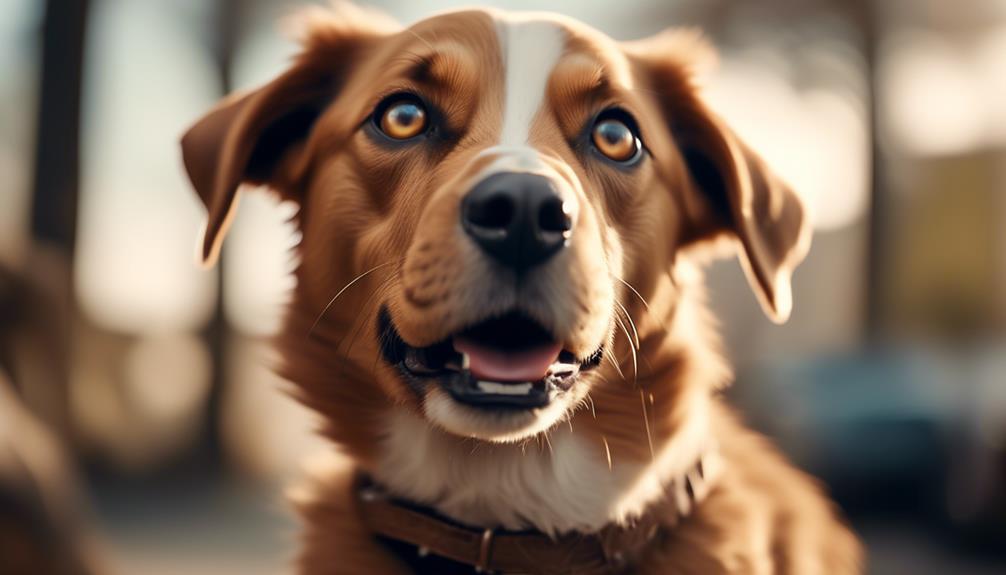
As we continue our exploration of the Labsky mixed dog breed, let's now turn our attention to their distinctive facial features and body structure.
Here are some key characteristics to note:
- Facial Features:
- Labskies have a friendly and intelligent expression, with almond-shaped eyes that can come in various colors.
- They often inherit the floppy ears of the Labrador Retriever, which adds to their endearing appearance.
- Body Structure:
- Labskies have a medium to large size and a strong, muscular build.
- They've a thick double coat that provides insulation and protection in different weather conditions.
- Labskies can come in a variety of colors, including black, brown, gray, and white.
With their expressive faces and sturdy physique, Labskies possess a unique blend of traits from both the Labrador Retriever and Siberian Husky that make them truly captivating.
Labsky Highlights and Key Facts
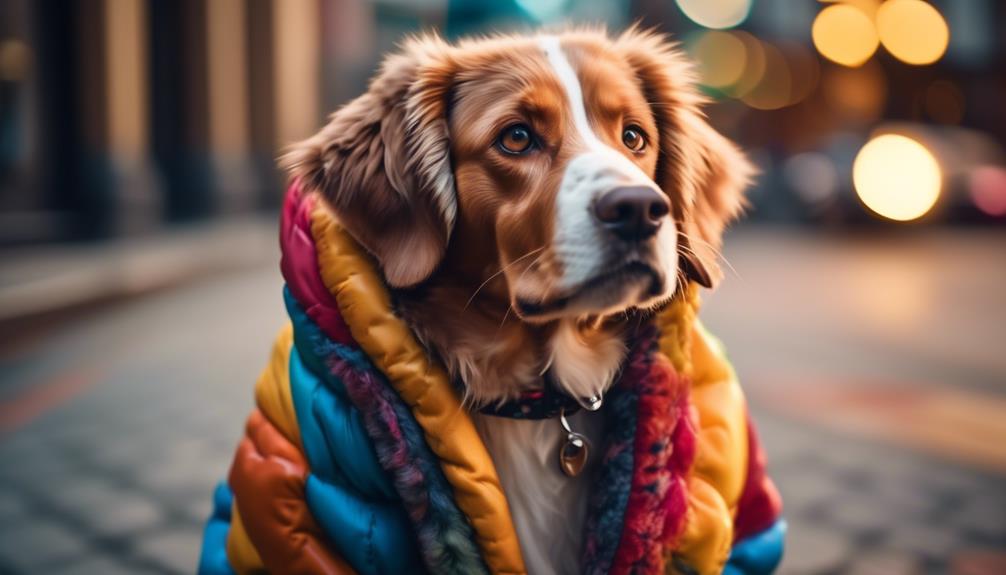
One important aspect to consider when learning about Labskies is understanding their unique highlights and key facts.
Labskies are a mixed breed dog, not a purebred, and were first intentionally bred in the 1990s. They're medium to large-sized dogs, known for their high energy levels. Labskies are usually very friendly and love human contact.
They've a double coat that requires daily brushing to keep it healthy and free from tangles. Labskies are a loyal and active breed that thrives on long walks and physical play sessions. They also enjoy mental stimulation and interactive toys.
Labskies are generally fairly healthy, but they can be predisposed to eye conditions, obesity, allergies, and hip dysplasia. Regular veterinary checkups and good care are important for their overall well-being.
Labsky Adaptability for Apartment Living

To determine if a Labsky is suitable for apartment living, consider their adaptability and energy levels. Here are three factors to consider:
- Activity Levels: Labskies have high energy levels and thrive on physical exercise. They require long walks and play sessions to keep them mentally and physically stimulated. If you live in an apartment, make sure you can provide enough exercise opportunities for your Labsky.
- Noise Level: Labskies that excessively bark may not be suitable for apartment living. It's important to prioritize qualities such as being quiet and exhibiting good manners when living in close proximity to other residents. Consider your neighbors' comfort when selecting a dog.
- Size: Labskies are medium to large-sized dogs. While size alone shouldn't be the sole determinant when choosing a dog for an apartment, some larger breeds can adapt well to apartment living with lower activity levels. Evaluate your living space and ensure it can comfortably accommodate a Labsky's size.
Consider these factors before bringing a Labsky into your apartment to ensure a harmonious living environment for both you and your furry friend.
Factors to Consider for Apartment Living
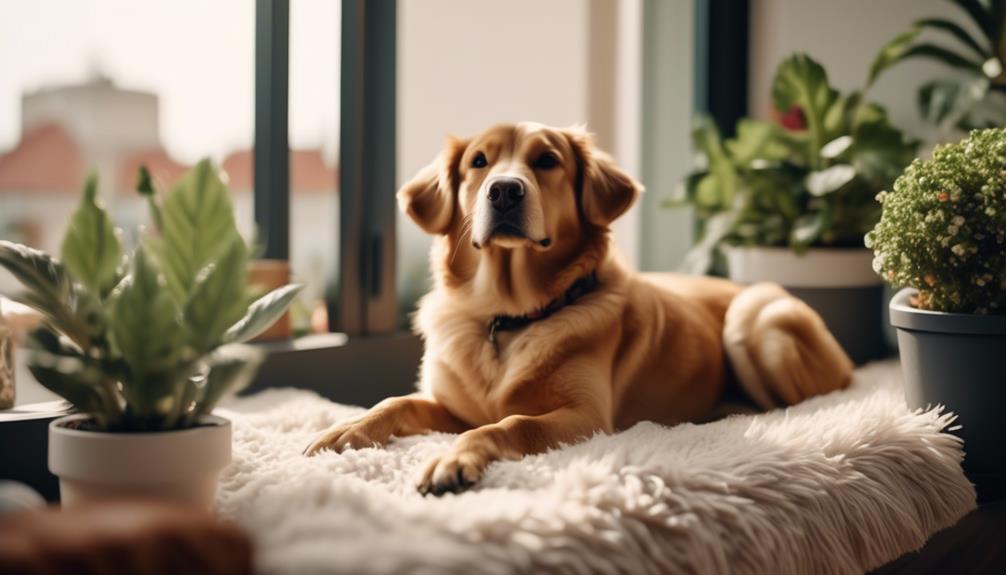
Consider the following factors when determining if a Labsky is suitable for apartment living.
- Size alone shouldn't be the sole determinant when choosing a dog for an apartment. Some larger breeds can adapt well to apartment living with lower activity levels.
- On the other hand, certain small dog breeds with higher energy levels can still thrive in apartments with indoor playtime or brisk walks.
- It's important to prioritize qualities such as being quiet, low-energy, calm indoors, and exhibiting good manners when living in close proximity to other residents.
- Labskies that excessively bark or exhibit high energy levels may not be suitable for apartment living.
- So, make sure to consider these factors before making a decision.
Labsky Sensitivity Level and Independence
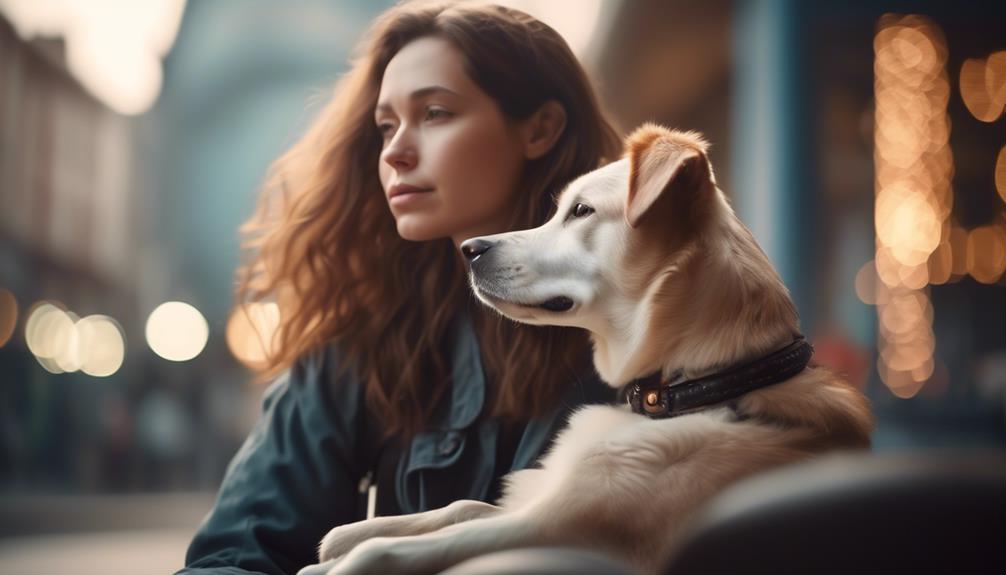
After considering the factors for apartment living, it's important to understand the Labsky's sensitivity level and independence. Here are three key points to know:
- Sensitivity Level: Labskies can vary in their sensitivity levels. Some are more resilient and easygoing, while others may require a calmer and more consistent environment. Consider your lifestyle and the type of environment you can provide when choosing a Labsky with the right sensitivity level for you.
- Tolerates Being Alone: Labskies that tolerate being alone are more independent and can handle periods of solitude. This makes them well-suited for owners who can't be with them all the time. Consider your daily routine and whether someone can be home during the day or if you can take the dog to work.
- Independence: Labskies have a friendly and loving nature, but some may also exhibit a level of independence. While they enjoy being around their family and seek human contact, they can also be capable of handling some alone time without becoming anxious or destructive.
Understanding the sensitivity level and independence of a Labsky can help you provide the right environment and care for this mixed breed dog.
Tolerating Being Alone
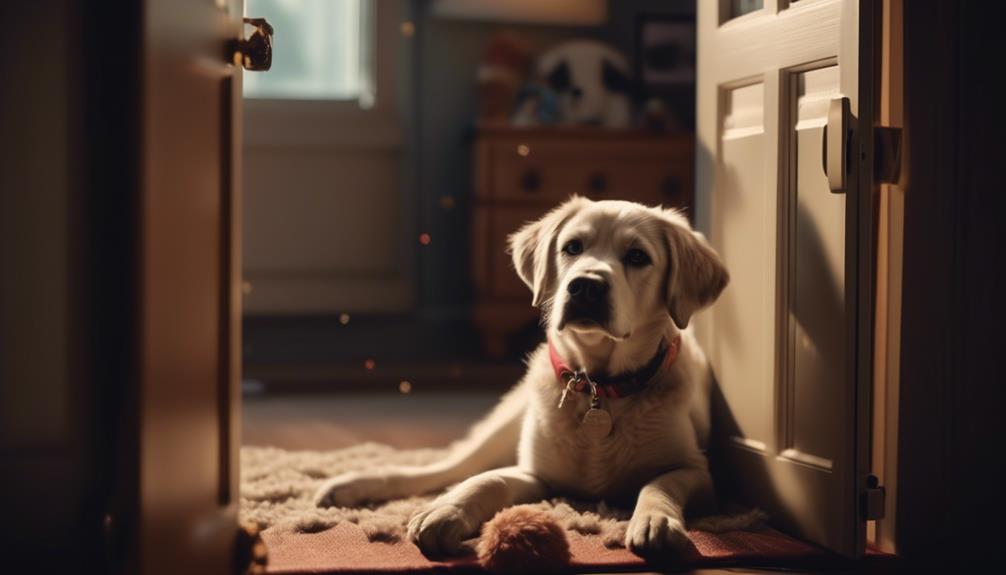
Labskies are capable of handling periods of solitude and can tolerate being alone without becoming anxious or destructive. These dogs are independent and don't rely heavily on constant human companionship. They've a calm and resilient nature, which allows them to handle being left alone for reasonable periods of time.
Labskies don't typically exhibit destructive behaviors like excessive barking, whining, or chewing when left alone. However, it's important to consider your dog's individual needs and personality when determining how long they can comfortably be left alone.
If you have a Labsky, it's a good idea to gradually increase the amount of time they spend alone to help them develop a sense of independence and confidence.
Labsky Tolerance to Cold Weather
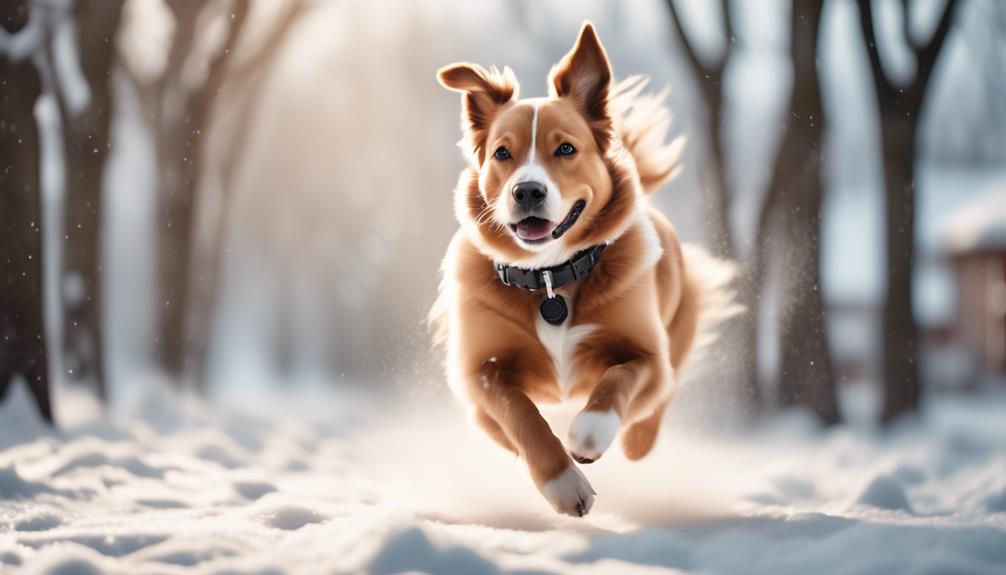
When it comes to Labskies, their ability to tolerate cold weather is an important factor to consider. These mixed breed dogs have a thick double coat that helps protect them from the cold, but their tolerance to cold weather can vary depending on individual factors.
Here are three key things to know about Labskies and cold weather:
- Coat: Labskies have a thick double coat that provides insulation and helps keep them warm in colder temperatures. However, it's important to note that their coat alone may not be enough to withstand extreme cold, especially for prolonged periods.
- Cold Tolerance: Labskies generally have a good tolerance to cold weather, thanks to their double coat and the cold-resistant genes inherited from their parent breeds. They can handle chilly temperatures and may even enjoy playing in the snow.
- Additional Protection: While Labskies have a natural ability to tolerate cold weather, it's still important to provide them with additional protection when necessary. This can include providing them with a warm and comfortable shelter or using dog jackets or sweaters during extremely cold weather.
Labsky Tolerance to Hot Weather
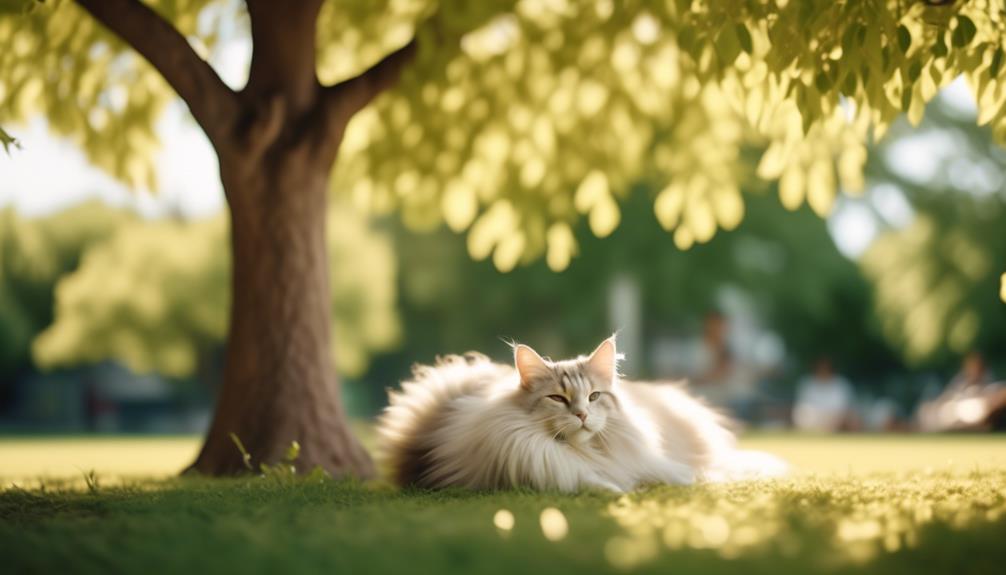
To ensure the well-being of your Labsky in hot weather, it's important to understand their tolerance to high temperatures. Labskies have a thick, double coat that can make them more susceptible to overheating. Breeds with thick coats or short noses, like Bulldogs or Pugs, have difficulty panting to cool themselves off and are more vulnerable to heat-related issues. It is crucial to be cautious when exercising your Labsky in hot weather to prevent heatstroke or exhaustion. Consider keeping them indoors with you on warm or humid days. Below is a table summarizing the Labsky's tolerance to hot weather:
| Tolerance to Hot Weather | Description |
|---|---|
| Susceptible to overheating | Labskies have a thick, double coat that can make them more susceptible to heat-related issues. |
| Difficulty panting | Breeds with thick coats or short noses, like Bulldogs or Pugs, have difficulty panting to cool off. |
| Caution when exercising | Be cautious when exercising your Labsky in hot weather to prevent heatstroke or exhaustion. |
| Keep indoors on warm days | Consider keeping your Labsky indoors with you on warm or humid days to ensure their safety. |
| Avoid excessive heat | Labskies should avoid excessive heat and be provided with appropriate cooling measures. |
Labsky History and Crossbreeding
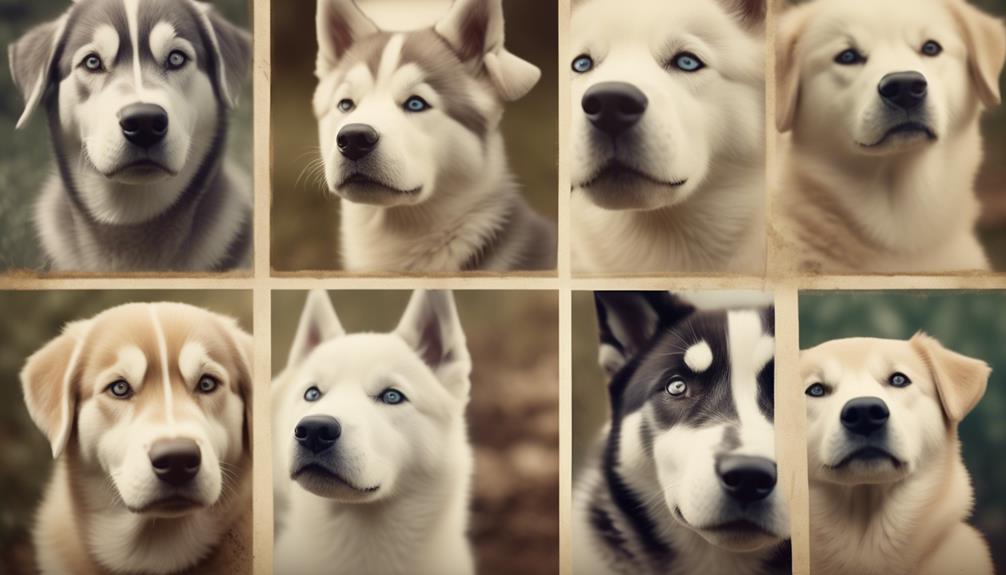
The history of Labsky and their crossbreeding can be traced back to the 1990s. The Labsky is a unique mix between a Labrador Retriever and a Siberian Husky, resulting in a dog with a combination of traits from both breeds.
Here are three key points about the Labsky's history and crossbreeding:
- Purposeful breeding: Labskies were first intentionally bred in the 1990s, combining the Labrador Retriever's retrieving abilities with the Siberian Husky's endurance and striking appearance.
- Labrador Retriever origins: The Labrador Retriever originated as a gun dog in Newfoundland during the 19th century, known for being hardworking and loyal.
- Siberian Husky heritage: The Siberian Husky has a rich history, originating over 3000 years ago in Alaska and Canada. They were bred for sledding and are known for their endurance and friendly nature.
The Labsky's unique blend of Labrador Retriever and Siberian Husky traits makes them an interesting and energetic companion.
Labsky Size, Personality, and Health Overview
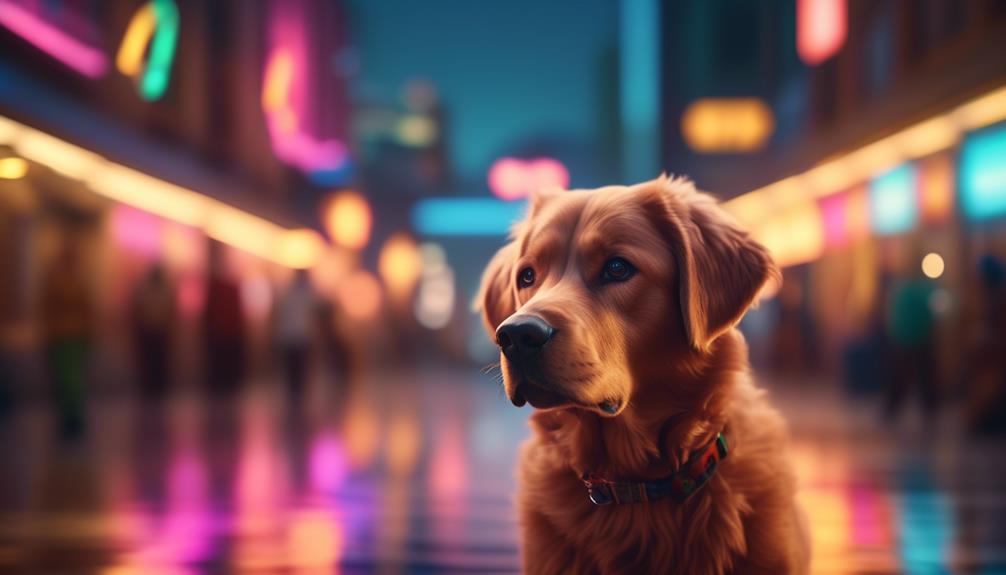
Labskies are medium to large-sized dogs with a unique blend of Labrador Retriever and Siberian Husky traits, making them energetic and interesting companions. Most Labskies weigh between 40 to 60 pounds and their height ranges from 20-28 inches.
They're described as loyal and exceptionally active, thriving on long walks and physical play sessions. Labskies also enjoy mental stimulation and interactive toys. They love being around family and seek human contact. While some Labskies may be seen as stubborn, they usually have a calm and friendly nature.
In terms of health, Labskies are generally fairly healthy but are predisposed to eye conditions, obesity, allergies, and hip dysplasia. Regular veterinary checkups and good care are important, along with maintaining good dental health and a dental care routine.
Labsky Common Health Conditions and Care Tips

Moving on to the topic of Labsky common health conditions and care tips, it's important to be aware of potential issues that may arise and how to provide the best possible care for your furry companion. Here are some key points to consider:
- Regular Veterinary Checkups: Schedule regular checkups with a veterinarian to monitor your Labsky's overall health and catch any potential health issues early on.
- Exercise and Mental Stimulation: Labskies are highly active dogs that require plenty of exercise and mental stimulation to prevent boredom and promote their well-being. Make sure to provide daily walks, play sessions, and interactive toys to keep them physically and mentally engaged.
- Proper Nutrition: Feed your Labsky a balanced and nutritious diet that's appropriate for their age, size, and activity level. Consult with your veterinarian to determine the best food options and portion sizes for your dog.
Frequently Asked Questions
What Are the Common Health Conditions and Care Tips for Labskies?
Common health conditions for Labskies include eye conditions, obesity, allergies, and hip dysplasia. Regular vet checkups and good care are important. Maintain good dental health. Take care of your Labsky's overall well-being.
Can Labskies Tolerate Being Alone for Long Periods of Time?
Labskies can tolerate being alone for moderate periods of time, but they thrive on human contact. If you're away for long hours, consider a dog walker or doggie daycare to ensure their social and mental needs are met.
What Are the Different Coat Colors and Patterns That Labskies Can Have?
Labskies can have a variety of coat colors, including black, brown, gray, and white. They may also have different coat patterns, such as solid, bi-color, or even a mix of multiple colors.
Are Labskies Suitable for Apartment Living?
Yes, Labskies can be suitable for apartment living if they have lower activity levels. However, factors such as being quiet, low-energy, calm indoors, and exhibiting good manners should also be considered for a harmonious living environment.
What Is the History and Crossbreeding Background of Labskies?
The history and crossbreeding background of Labskies dates back to the 1990s. They are a mix between a Labrador Retriever and a Siberian Husky. Labskies are medium to large-sized dogs known for their loyalty and high activity levels.
What are the characteristics and facts about the Horgi mixed breed, similar to the information provided for the Labsky?
The husky corgi mix information is gaining popularity among dog enthusiasts. Known as Horgis, these adorable hybrids combine traits such as the Corgi’s short legs and the Husky’s striking eyes. Horgis are known for being friendly, intelligent, and playful, making them great family pets. With a moderate exercise requirement, they are suitable for various living environments. Horgis typically display a thick double coat that requires regular grooming to keep them looking their best.
Conclusion
So, if you're looking for a beautiful and adaptable mixed breed dog, the Labsky might be the perfect choice for you.
With their medium to large size, strong build, and variety of coat colors, Labskies aren't only physically stunning but also have friendly and intelligent expressions.
They're known for their tolerance to different climates and make great additions to any family.
Consider all the characteristics, temperament, and health considerations discussed in this article to make an informed decision about getting a Labsky.




